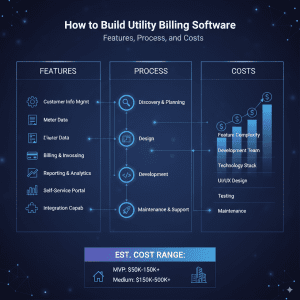Introduction
The integration of telehealth systems with Electronic Health Records (EHR) is revolutionizing healthcare delivery by creating seamless, real-time access to patient data during virtual visits. This strategic alignment enhances care quality, streamlines operations, and opens new avenues for growth in healthcare organizations.
Use Cases of Telehealth-EHR Integration
Post-Surgical Follow-Ups
Clinics use integrated systems to conduct virtual check-ins post-surgery, automatically updating patient records to ensure continuity and reduce unnecessary office visits.
Remote Patient Monitoring
Providers track chronic conditions via connected devices, with vitals and alerts seamlessly synced to the EHR, enabling proactive and timely interventions.
Tele-specialty Consultations
Specialists access comprehensive patient histories during remote consultations, reducing transcription errors and improving care coordination.
Chronic Disease Management
Integrated platforms allow centralized teams to monitor and respond to patient health remotely, reducing admissions and supporting underserved populations.
Rural Telehealth Access
Integration helps overcome barriers for rural facilities by enabling consistent remote care and efficient patient data exchange.
Integration Process Overview
-
Assessment & Planning: Evaluate existing telehealth and EHR systems for compatibility and establish integration goals.
-
Choosing Integration Methods: Use APIs, HL7, or FHIR standards for data exchange.
-
Data Mapping & Migration: Align telehealth data fields with EHR structures.
-
Development & Testing: Build integration components and conduct rigorous testing.
-
User Training: Train staff on new workflows and interfaces.
-
Deployment & Monitoring: Rollout integration with ongoing support and optimization.
Cost Considerations
-
Small to mid-sized providers may expect initial setup costs between $20,000 to $200,000 depending on complexity.
-
Data migration can range from $5,000 to $150,000+.
-
Larger health systems investing in enterprise integration may face $400,000 to $600,000+ expenses.
-
Annual maintenance, licensing, and staff training costs add to the ongoing investment.
-
The right vendor partnership maximizes ROI while minimizing unforeseen expenses.
Benefits of Integration
-
Enhanced Clinical Workflow: Reduced manual entry, less duplication, and faster documentation.
-
Improved Patient Experience: Seamless virtual visits with full access to medical history.
-
Operational Efficiency: Streamlined billing, scheduling, and reporting.
-
Scalability & Flexibility: Supports growth and new telehealth services with unified data infrastructure.
-
Data Security & Compliance: Centralized policies reduce risk and simplify audits.
Conclusion
Strategic telehealth-EHR integration is a catalyst for healthcare innovation and improved business outcomes. By bridging virtual care with comprehensive patient records, organizations boost quality, efficiency, and patient satisfaction while controlling costs.
For expert telehealth integration services and tailored healthcare technology solutions, visit TechOTD AI Services and stay informed via the TechOTD Blog.











